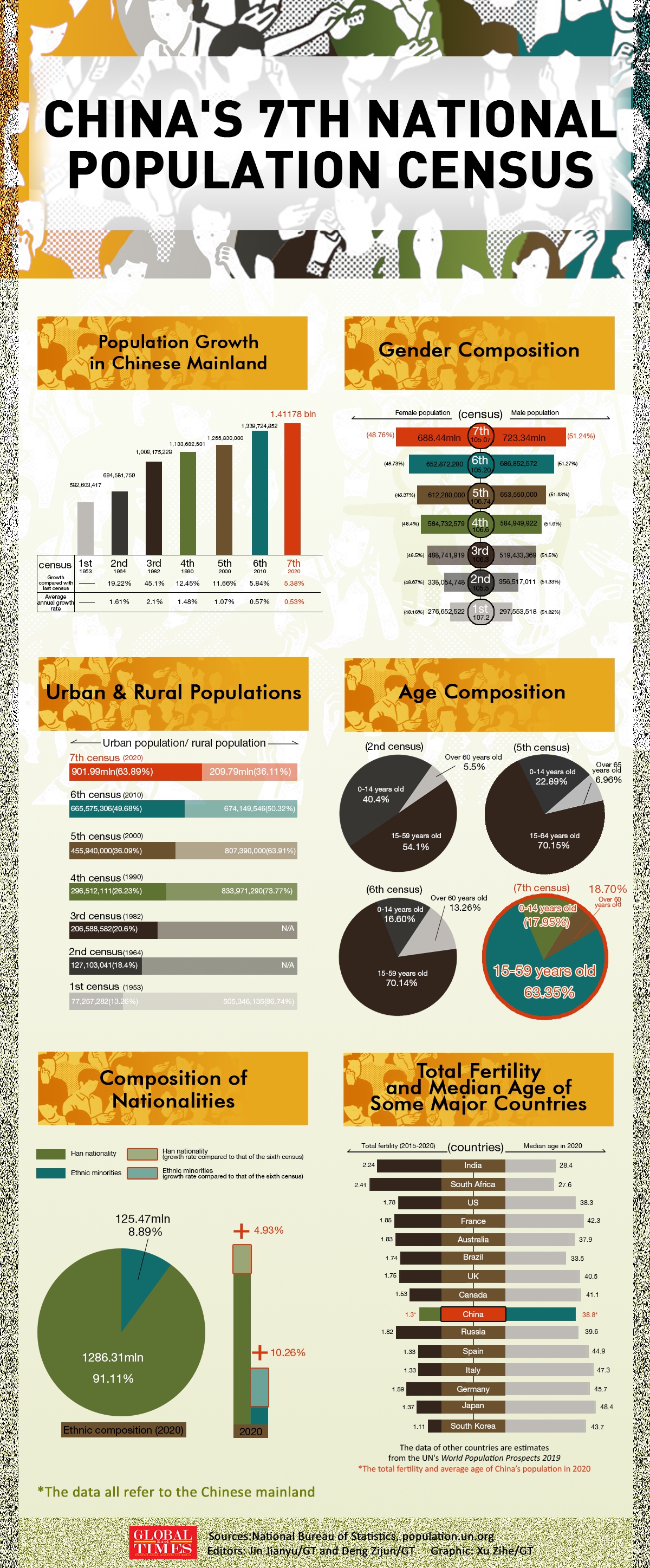
Photo: Xinhua
While Western media has been hyping how China's growing gray population will bring a looming economic crisis to the Communist Party of China, the fact that China's population dividend will pick up and sustain its rosy economic expansion may disappoint them.
The future of the world's second-largest economy, in their articles, is at the verge of collapsing, with a draining labor force undermining core competitiveness, disrupting social structure and pushing away foreign investment.
However, observers have painted a drastically different picture. They noted the demographic change will herald a time when China moves from "working to meet global demand" to "the world sparing no efforts to cater to China's tastes [burgeoning demand for quality products]," and such sheer size of the market will keep expanding with the rise of disposable incomes.
As generations become richer, well-educated and more tech-savvy, that will also lead to a profound effect on the country's economic structure, speeding up the gravity shift from low-end manufacturing to digital and high-tech industries as well as high value-added services sectors such as luxury, healthcare and travel, according to analysts.
It is estimated that India would soon take over China to become the world's most populous nation as China's population growth slows. The South Asian neighbor's expanding population in the near future may give it a big fillip in building factories and supplying to the world, but analysts pointed out that such growth is not "indigenous and sustainable," and in the long-term, could widen its yawning gap with China amid a global digitalization push.
China's workforce has plunged, according to the results of the seventh national population census released on Tuesday.
The number of China's labor force between 15 and 59 years dropped about 45 million to 894 million in 2020 compared with 2010, while the number of people aged 60 and above rising to 264 million, up from 177.6 million in the 2010 census.
But the proportion of people aged 14 and younger in the Chinese mainland was 17.95 percent, up 1.35 percentage points from the 2010 census.
"The average age of China's population is 38.8 years, which is still young and energetic. It is almost the same to the average age of the US which is 38 years old," Ning Jizhe, head of the National Bureau of Statistics (NBS), said at a press briefing to release the census on Tuesday.
This was in response to a question on how the demographic change would weigh on China's economy. Ning added that China's population dividend still exists, and its labor resources are still abundant.
Industry observers said that the stakes involving the demographics are high not only in terms of serving as a guide for government policy tools, but more importantly, it could help China embark on a new economic model that relies less on cheap labor and more by booming consumption and innovation.
The transformation is on par with the country's economic overhaul to shift the gravity of growth.
"The population dividends persist, but are presented in a different way — from labor-intensive to innovation and technique-driven," Cao Heping, a professor of economics at Peking University in Beijing, told the Global Times on Tuesday, shrugging off concerns that a demographic crisis is imminent which could thwart China's growth.
The population of the Chinese mainland expanded to 1.41 billion in 2020. Despite a waning growth rate, the number still exceeded the combined population of the world's major developed economies, including the US.

China's 7th National Population Census Infographic: Xu Zihe/GT
Shifting gravityIn a digitally-led growth model, the size of the population and young workforce is of less significance, but their capacity for consumption and education level are worth watching, according to Cao, who took note of China's optimizing demographic structure.
According to Ning, China's large population base has not changed, and the advantage of its super-sized market at home will exist for a long time.
"The quality of the population has improved significantly and the talent bonus will gradually appear," Ning said, while pointing to the urgency of adjusting the economic structure, tech development and speeding up the industrial upgrade.
Cao noted that China's Asian neighbors like Japan, South Korea and Singapore have embarked on a similar course before climbing up the threshold of developed nations. "China could also follow such path."
China's per capita disposable income reached 32,189 yuan ($4,961) in 2020, more than double the level in 2010 and above the average level of middle-income countries, according to NBS.
A jump in household incomes plus the domestic market size are also likely to further spur the appetite for innovative products, experimental consumption and services, reshaping the economic landscape, analysts said, noting that the new growth drivers could underpin China's GDP to grow at a "moderately high" period in the next decade.
"A cohort of young people would likely be drawn by intelligent terminals, such as artificial intelligence, virtual intelligence and smartphones, which will in turn further accelerate a digitalizing economy," Cao said, who called for more measures to stimulate the country's consumption.
Meanwhile, observers also forecasted a potentially explosive demand in healthcare industries, from pharmaceutical, elderly care, to nanomedicine and other new treatment techniques, as well as wealth management services.
Tian Yun, vice director of the Beijing Economic Operation Association, predicted that the annual growth of resident spending on the education and healthcare sectors will stand above 8 percent during the 14th Five-Year Plan period, higher than the average growth in residents' consumption of 6.9 percent.
However, a growing aging population could also increase social insurance costs, straining local government's coffer as well as raising enterprises and individuals' tax burden, analysts said.
Another setback is the labor shortage issue, where manufacturers could be scrambling to secure enough workers for their factories, weakening China's position as the world's export machine, Jia Pu, vice president of Tianyi Digital Economy Think Tank, told the Global Times.
A manager of a Shenzhen-based glass-making factory surnamed Duan, told the Global Times on Tuesday that her company has been doubling down efforts to replace a human workforce with intelligent production lines.
"There are short-term shockwaves due to a drain in a young labor force, but the trend of replacing low-end manufacturing with intelligent manufacturing is irreversible," Duan said. "If we move forward smoothly with the plan, we could cut the workforce by 30 percent this year."
Comparing with India
Some media suggested that China, with an average age of 38.8 years, will soon lose its comparative advantage to "younger" India, whose population has an average age of around 29 years. But a close examination of each country's population quality may offer a glimpse of how India's population dividends may confine its long-term development.
In 2019, about 26.62 percent of the Indian population fell into the 0-14 year category, while 67 percent were in the 15-64 age group, data showed.
India is home to the world's second-largest population of around 1.38 billion and is on pace to overtake China as the world's most populous nation.
"India is still positioned at the early period of industrialization, so a younger workforce could give it an edge in attracting global manufacturers. Some factories are likely to leave China for India to take advantage of cheap production factorsafter the coronavirus outbreak eases," Cao said.
But India is about two decades behind China in residents' consumption ability, analysts said. It is also estimated to have 134 million people living in poverty, according to a Pew Research Center analysis released in March. The number accounts for roughly 10 percent of its population.
Analysts said that the exceptionally large poverty group, the gap between the rich and the poor, caste hatred, and infrastructure problems have all constrained India's consumption, blocking the country's efforts to build an effective market at home to translate India's demographic dividend into effective growth.
"The overall population quality of India needs to be improved, and with the impact of the epidemic, it will take much longer for India to catch up with China in terms of knowledge-driven demographic dividend," Tian said.





